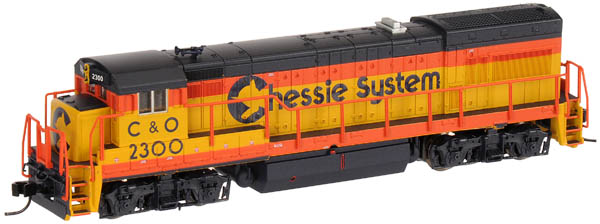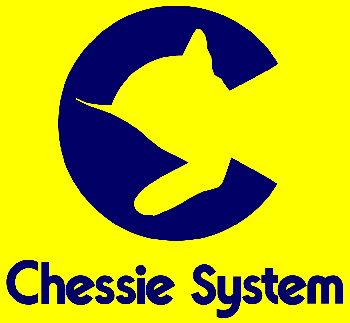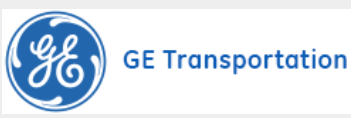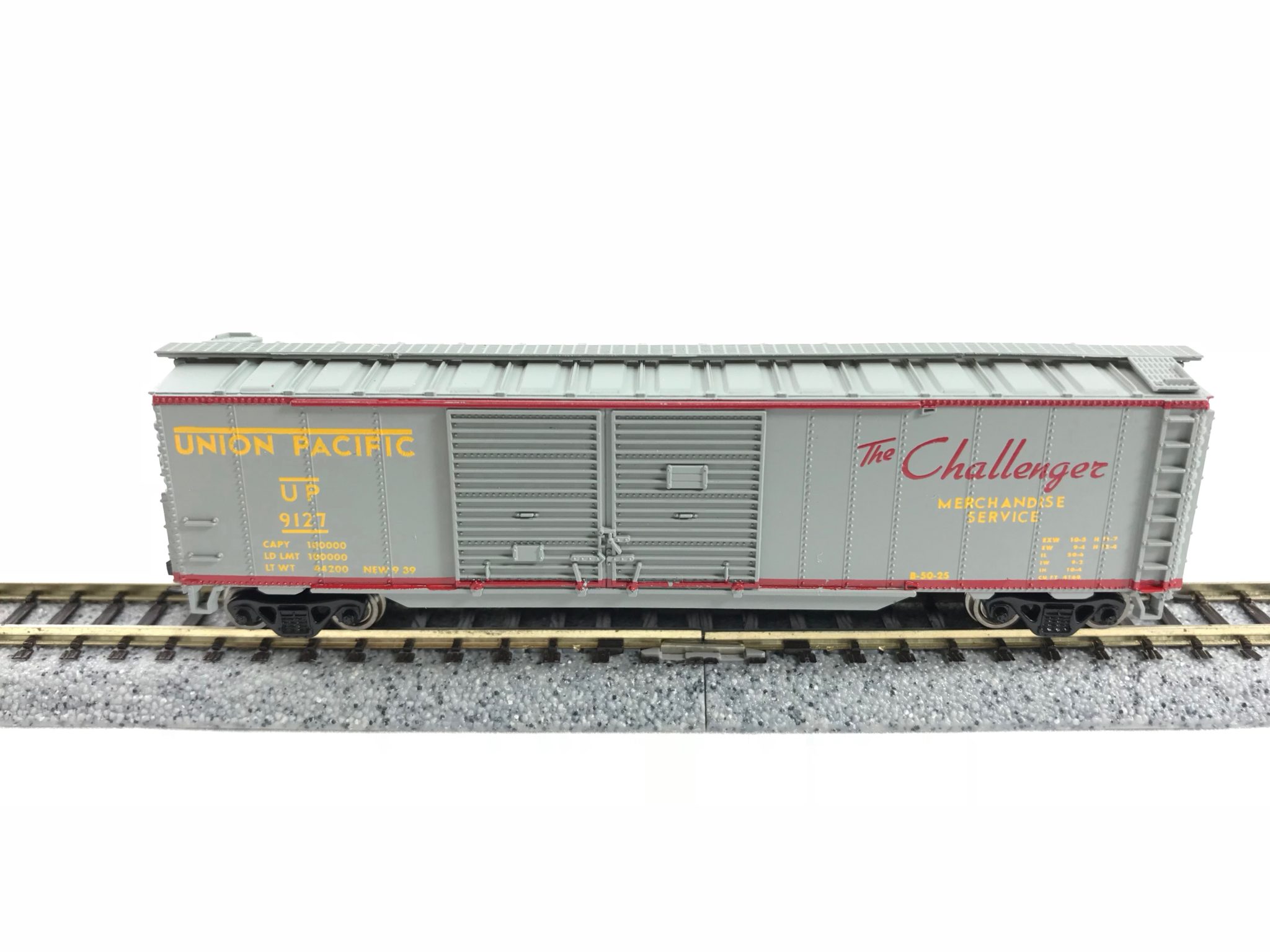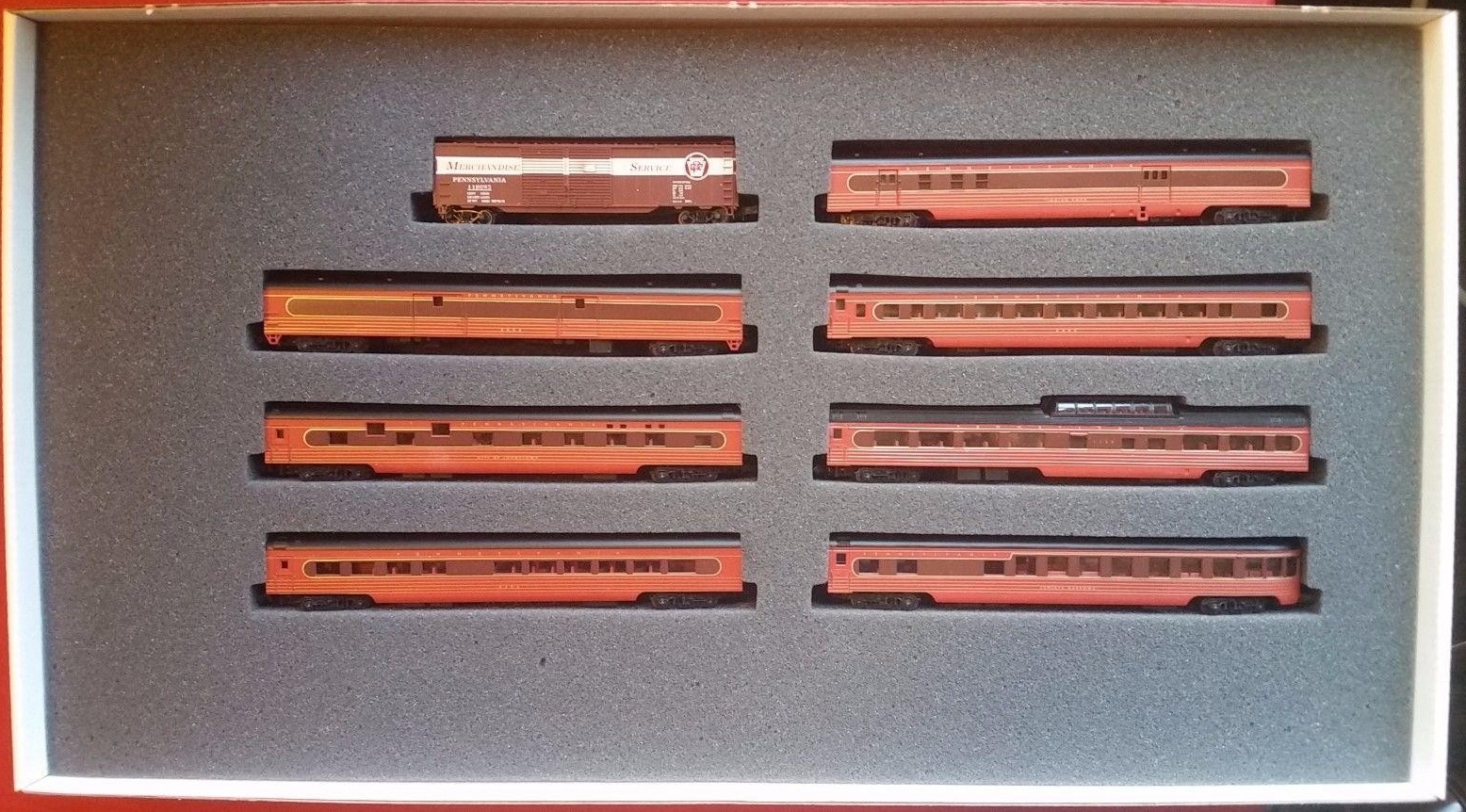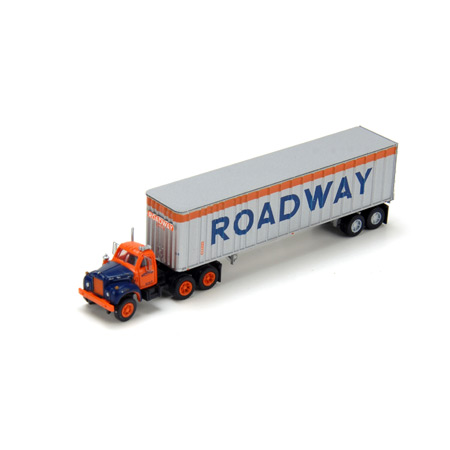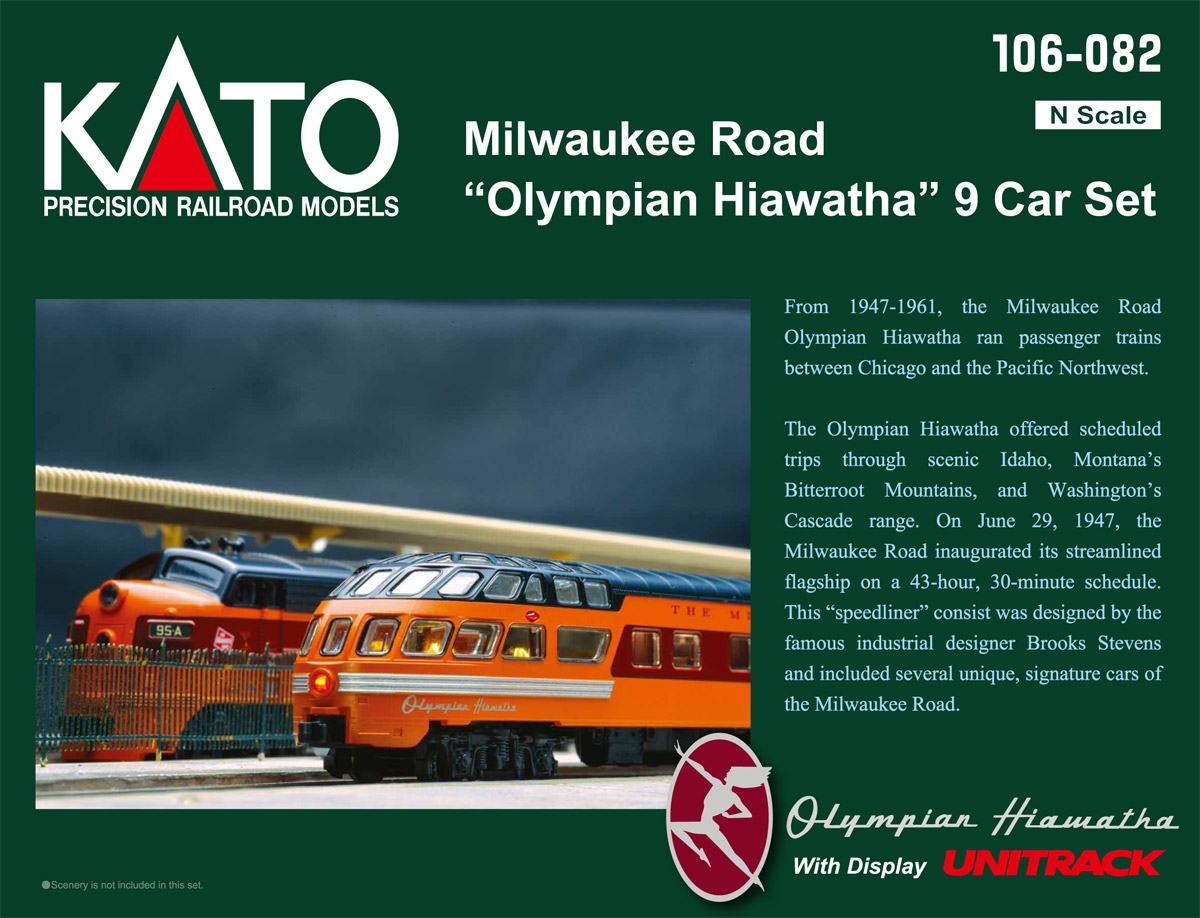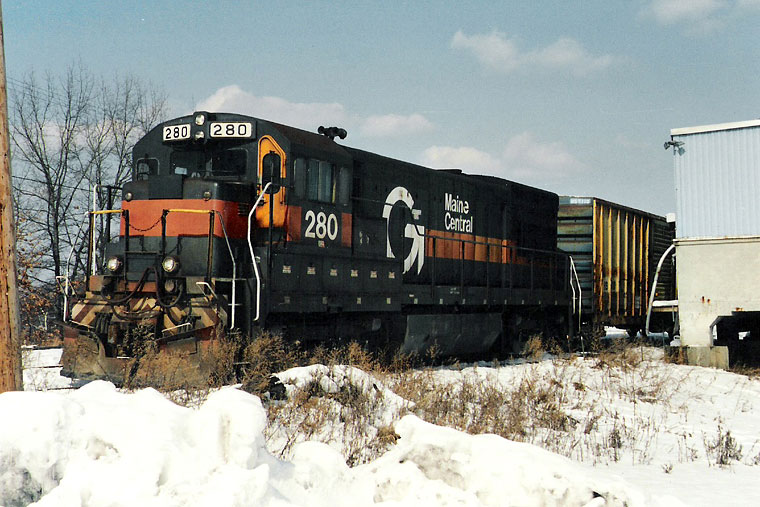Specific Item Information: MASTER MODEL FEATURES:
• Operational low nose headlight (used where appropriate)
• Both DCC ready and DCC equipped versions
• Separate coupler cut lever
• Cab with 4 or 2 side windows (as appropriate per road name)
• Directional lighting
• Golden white LEDs
• Painted safety rails
• Blackened metal wheels
• Dual flywheel equipped 5-pole skewed armature motor with a low friction mechanism
• Factory-installed AccuMate® magnetic knuckle couplers!
Model Information: This model was introduced by Atlas in 2006. It features
Operational low nose headlight (used where appropriate);
Separate coupler cut lever;
Cab with 4 or 2 side windows (as appropriate per road name);
Golden white LEDs;
Painted safety rails;
Dual flywheel equipped 5-pole skewed armature motor with a low friction mechanism.
DCC Information: The chassis is fully DCC-Ready and, in is usually available with factory-installed decoder. The model is a modern split-frame design and accepts drop-in decoders.
Prototype History: The GE U23B Diesel-electric locomotive was introduced by GE Transportation in 1968 as a medium horsepower roadswitcher, featuring a 12 cylinder FDL engine. It was one of the most successful models of the Universal Series, with railroads ordering it from 1968 until 1977 when it was replaced by the B23-7. 481 units were built, including 16 exported to Peru.
Not many U23Bs still exist, but a few shortline and regional railroads still use them in everyday service. The Georgia Central Railway was one of the last U23B holdouts, rostering almost all of the remaining ex Southern Railway (U.S.) high short hood U23Bs. The Georgia Central as of July 2015 has all of its U23Bs off of the roster with the 3965 going to the Southern Appalachia Railway Museum in Oak Ridge, TN.
The Huntsville and Madison County Railroad Authority in Huntsville, AL, operates perhaps one of the last U23B's used in daily freight service, as of October 2015. HMCR 9554 was originally built in late 1974 as L&N 2800. The last U23B built, originally Conrail 2798, and more recently Providence and Worcester 2203, is in regular excursion service at the Naugatuck Railroad, operated by the Railroad Museum of New England in Thomaston, Connecticut. Western Rail Inc in Airway Heights, WA currently has a U23B that you can lease. It was used on the Eastern Washington Gateway Railroad as of 2017 for freight service. It is numbered NIWX 2204 and is a ex Northern Illinois and Western locomotive.
The Huntsville and Madison County Railroad Authority in Huntsville, AL, operates perhaps one of the last U23B's used in daily freight service, as of October 2015. HMCR 9554 was originally built in late 1974 as L&N 2800. The last U23B built, originally Conrail 2798, and more recently Providence and Worcester 2203, is in regular excursion service at the Naugatuck Railroad, operated by the Railroad Museum of New England in Thomaston, Connecticut. Western Rail Inc in Airway Heights, WA currently has a U23B that you can lease. It was used on the Eastern Washington Gateway Railroad as of 2017 for freight service. It is numbered NIWX 2204 and is a ex Northern Illinois and Western locomotive.
Road Name History: Chessie System, Inc. was a holding company that owned the Chesapeake & Ohio Railway (C&O), the Baltimore & Ohio Railroad (B&O), the Western Maryland Railway (WM), and several smaller carriers. It was incorporated in Virginia on February 26, 1973, and it acquired the C&O (which controlled the other companies) on June 15. C&O had been popularly known as "Chessie System" since the 1930s.
The three railroads had been closely related since the 1960s. C&O had acquired controlling interest in B&O in 1962, and the two had jointly controlled WM since 1967.
On November 1, 1980, Chessie System merged with Seaboard Coast Line Industries to form CSX Corporation. However, the Chessie image continued to be applied to new and re-painted equipment until mid-1986, when CSX introduced its own paint scheme. The B&O and C&O were not legally merged out of existence until 1987, when the company's official successor, CSX Transportation was founded.
Headquartered in Cleveland, Ohio, the Chessie System was the creation of Cyrus S. Eaton and his prot?g? Hays T. Watkins, Jr., then president and chief executive officer of C&O. A chief source of revenue for the Chessie System was coal mined in West Virginia. Another was the transport of auto parts and finished motor vehicles.
The signature symbol of the Chessie System was its "Ches-C", a large emblem incorporating the outline of the C&O's famous "Chessie" the kitten logo. The Ches-C was emblazoned on the front of all Chessie System locomotives, and also served as the "C" in "Chessie System" on the locomotive's flanks, and on other rolling stock. The Chessie System itself did not own any locomotives or other rolling stock; rather, equipment would be placed on the roster of one of the three component railroads. While all three companies shared a common paint scheme of yellow, vermillion, and blue, actual ownership of the equipment was denoted by the reporting marks C&O, B&O, or WM.
From Wikipedia
The three railroads had been closely related since the 1960s. C&O had acquired controlling interest in B&O in 1962, and the two had jointly controlled WM since 1967.
On November 1, 1980, Chessie System merged with Seaboard Coast Line Industries to form CSX Corporation. However, the Chessie image continued to be applied to new and re-painted equipment until mid-1986, when CSX introduced its own paint scheme. The B&O and C&O were not legally merged out of existence until 1987, when the company's official successor, CSX Transportation was founded.
Headquartered in Cleveland, Ohio, the Chessie System was the creation of Cyrus S. Eaton and his prot?g? Hays T. Watkins, Jr., then president and chief executive officer of C&O. A chief source of revenue for the Chessie System was coal mined in West Virginia. Another was the transport of auto parts and finished motor vehicles.
The signature symbol of the Chessie System was its "Ches-C", a large emblem incorporating the outline of the C&O's famous "Chessie" the kitten logo. The Ches-C was emblazoned on the front of all Chessie System locomotives, and also served as the "C" in "Chessie System" on the locomotive's flanks, and on other rolling stock. The Chessie System itself did not own any locomotives or other rolling stock; rather, equipment would be placed on the roster of one of the three component railroads. While all three companies shared a common paint scheme of yellow, vermillion, and blue, actual ownership of the equipment was denoted by the reporting marks C&O, B&O, or WM.
From Wikipedia
Brand/Importer Information: In 1924 Stephan Schaffan, Sr. founded the Atlas Tool Company in Newark, New Jersey. In 1933 his son, Stephan Schaffan, Jr., came to work for his father at the age of sixteen. Steve Jr. built model airplanes as a hobby and frequented a local hobby shop. Being an enterprising young man, he would often ask the owner if there was anything he could do to earn some extra spending money. Tired of listening to his requests, the hobby-store owner threw some model railroad track parts his way and said, "Here, see if you can improve on this".
In those days, railroad modelers had to assemble and build everything from scratch. Steve Jr. created a "switch kit" which sold so well, that the entire family worked on them in the basement at night, while doing business as usual in the machine shop during the day.
Subsequently, Steve Jr. engineered the stapling of rail to fiber track, along with inventing the first practical rail joiner and pre-assembled turnouts and flexible track. All of these products, and more, helped to popularize model railroading and assisted in the creation of a mass-market hobby. The budding entrepreneur quickly outgrew the limitations of a basement and small garage operation. Realizing they could actually make a living selling track and related products, Steve and his father had the first factory built in Hillside, New Jersey at 413 Florence Avenue in 1947. On September 30, 1949, the Atlas Tool Company was officially incorporated as a New Jersey company.
In 1985, Steve was honored posthumously for his inventions by the Model Railroad Industry Association and was inducted into the Model Railroad Industry Hall of Fame in Baltimore, Maryland. In addition, Steve was nominated and entered into the National Model Railroad Association Pioneers of Model Railroading in 1995.
In the early 1990s, the Atlas Tool Company changed its name to Atlas Model Railroad Company, Inc.
In those days, railroad modelers had to assemble and build everything from scratch. Steve Jr. created a "switch kit" which sold so well, that the entire family worked on them in the basement at night, while doing business as usual in the machine shop during the day.
Subsequently, Steve Jr. engineered the stapling of rail to fiber track, along with inventing the first practical rail joiner and pre-assembled turnouts and flexible track. All of these products, and more, helped to popularize model railroading and assisted in the creation of a mass-market hobby. The budding entrepreneur quickly outgrew the limitations of a basement and small garage operation. Realizing they could actually make a living selling track and related products, Steve and his father had the first factory built in Hillside, New Jersey at 413 Florence Avenue in 1947. On September 30, 1949, the Atlas Tool Company was officially incorporated as a New Jersey company.
In 1985, Steve was honored posthumously for his inventions by the Model Railroad Industry Association and was inducted into the Model Railroad Industry Hall of Fame in Baltimore, Maryland. In addition, Steve was nominated and entered into the National Model Railroad Association Pioneers of Model Railroading in 1995.
In the early 1990s, the Atlas Tool Company changed its name to Atlas Model Railroad Company, Inc.
Item created by: Powderman on 2021-12-12 13:39:22. Last edited by Powderman on 2021-12-12 13:39:23
If you see errors or missing data in this entry, please feel free to log in and edit it. Anyone with a Gmail account can log in instantly.
If you see errors or missing data in this entry, please feel free to log in and edit it. Anyone with a Gmail account can log in instantly.


